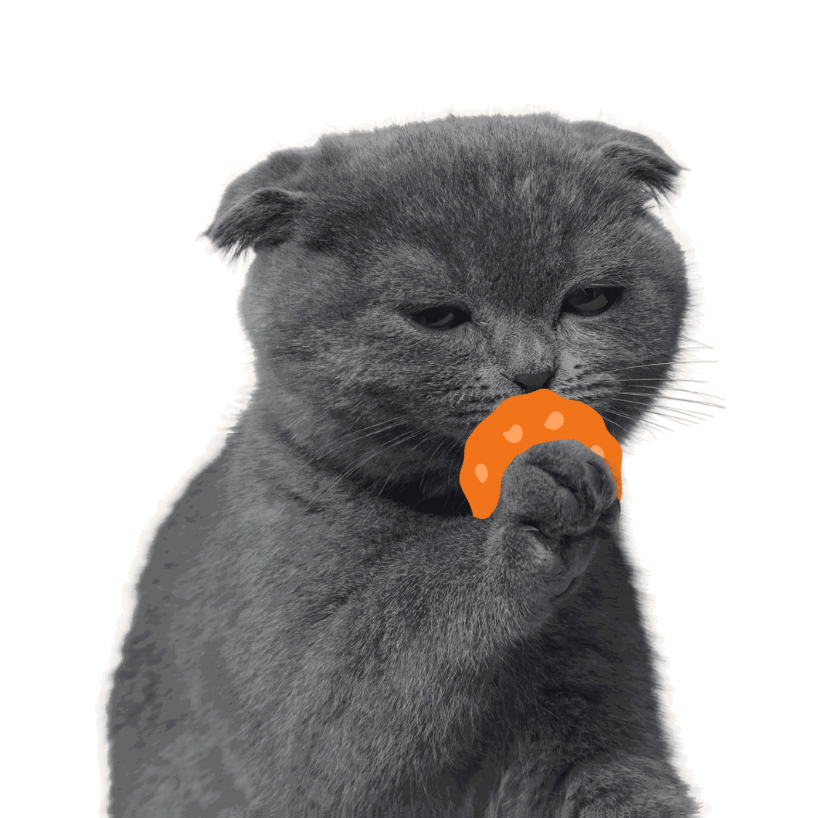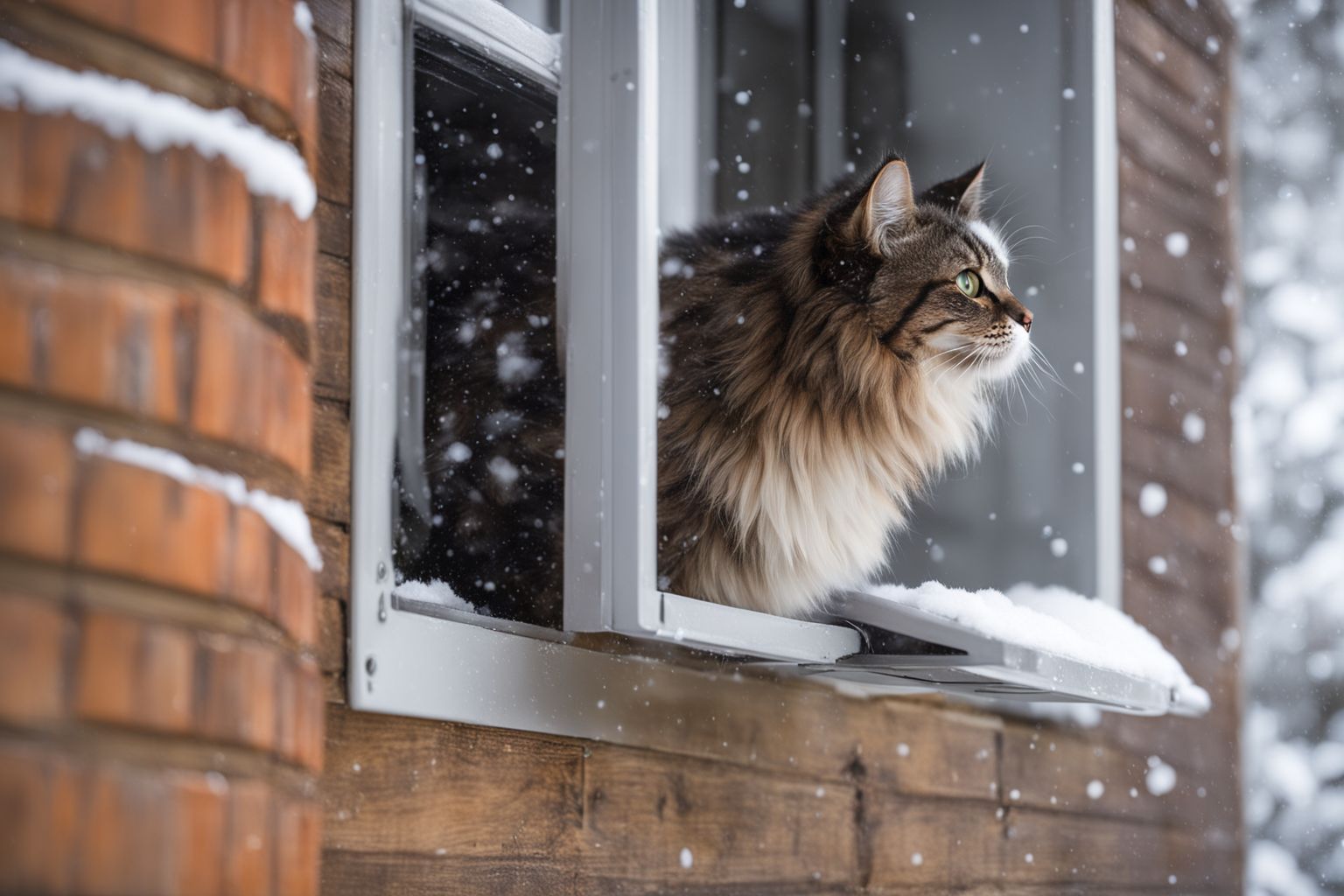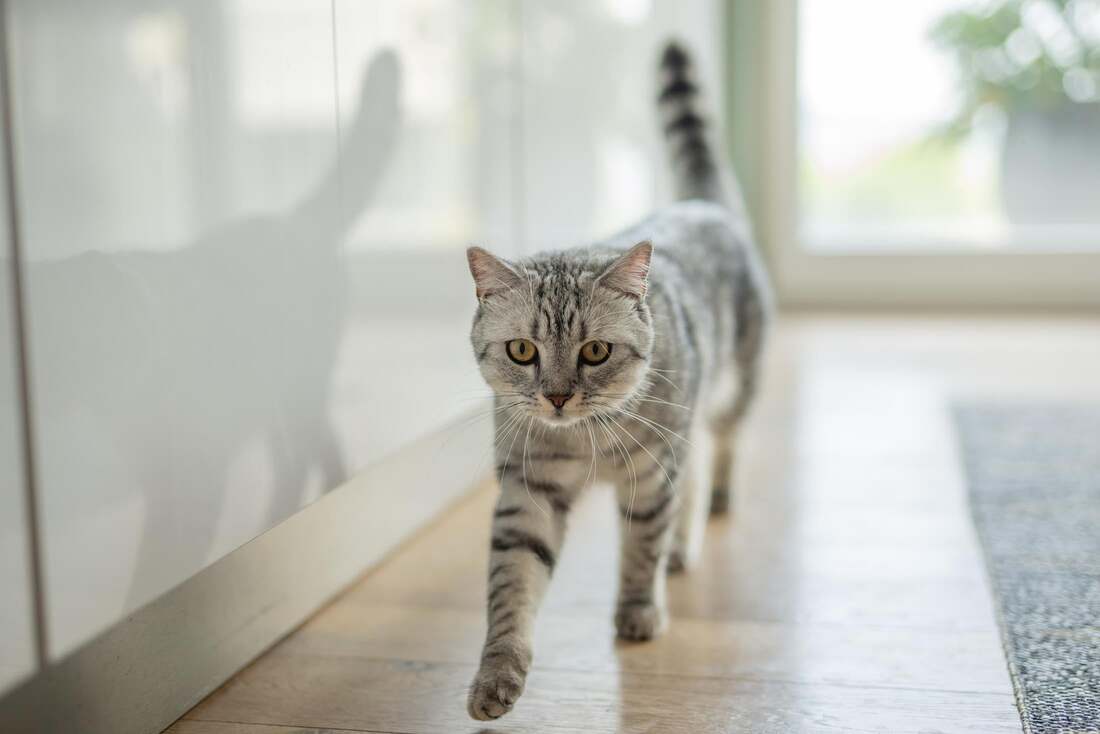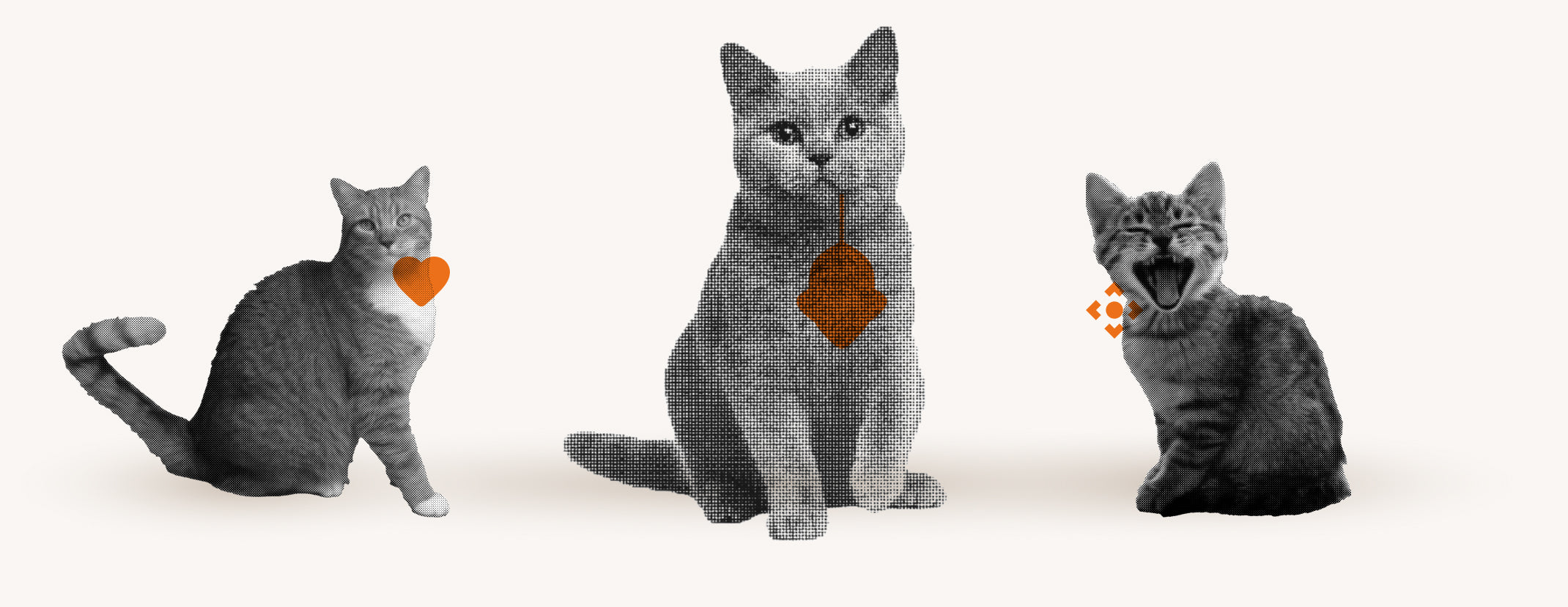Winter is just around the corner and with it the challenge of giving your cat freedom without freezing. Every cat owner knows the problem: the cat flap becomes an icy windbreak and causes heating costs to skyrocket. A mobile cat flap offers the solution here as it can be used flexibly and is better insulated against the cold.
In this article, you will learn why a mobile cat flap is useful in winter, how to make it winter-proof and what intelligent solutions there are to give your four-legged friend easy access even in the cold.
Why a mobile cat flap is useful in winter

In the frosty winter we want to be warm and cozy, and that goes for our cats too. A mobile cat flap is particularly useful at this time of year, as it allows access to the outside without the cold air flowing unhindered into the house. This way your cat can decide for itself when it wants to get a breath of fresh air or prefers to stay warm.
The advantages of a mobile cat flap in winter are many. On the one hand, it protects against the cold because it is often better insulated than a permanently installed flap. On the other hand, it offers flexibility in installation - for example, it can be placed in a more sheltered place on the coldest days. In addition, a mobile cat flap can be removed quickly and easily if necessary.
It is important for cats to have access to the outdoors even in winter. The reasons for this are:
- Exercise : Cats need activity even when it’s cold.
- Territory : They want to be able to monitor their territory.
- Curiosity : The urge to explore the surroundings remains, no matter what the weather. A mobile cat flap supports these natural needs without you having to constantly open the door.
Last but not least, a mobile cat flap is a practical solution for tenants who are not allowed to make permanent changes to their apartment. It can be installed without much effort and can easily be taken with you when you move house. It is a simple way to offer your cat freedom and security while keeping your home warm and cozy .
Cat flap and roller shutter in winter – a technical challenge

In winter, the combination of cat flap and roller shutter presents a particular challenge. Cold and damp can enter the house through the cat flap and cause unpleasant drafts. It is therefore important that the mobile cat flap is well insulated and works seamlessly with the roller shutter system.
A technical solution to this problem is to integrate the cat flap into the roller shutter box. This way, the roller shutter can continue to serve as protection against heat and cold , while the cat retains its own entrance. It is important that the flap closes tightly and that no thermal bridges are created.
- Automatic roller shutter systems can be synchronized with the cat flap so that the roller shutter only goes up when the cat wants to go through the flap.
- Insulating materials such as special seals or brush strips can improve the insulation of the cat flap.
- Infrared sensors can detect when the cat is nearby and control the shutters accordingly.
In addition to the technical implementation, it is also important that the cat flap is easy to use and offers the cat a comfortable passage . Ideally, it should be designed so that it works reliably even in severe winter temperatures and does not leave the cat standing in front of a locked door.
Making the cat flap winter-proof – tips and tricks
To winterize the cat flap, start by checking the seals . These should be intact and have no cracks or holes through which cold air could flow in. If necessary, replace them or add additional sealing strips.
Another measure is to attach insulating material to the inside of the flap. Examples of suitable materials include:
- Foam sheets that you can cut to size and attach to the flap.
- Thermal curtains that are installed in addition to the flap and keep the heat in the house.
Protection from wind and rain is also important. Make sure the cat flap has an overhang or a sluice to prevent precipitation from getting in. Magnetic strips at the bottom of the flap can help to close it tightly and protect it from the wind.
Finally, you should also remember to maintain and clean the cat flap regularly to maintain its functionality . Check the moving parts for wear and tear and lubricate them if necessary so that your cat can go in and out without any problems, even in winter.
Flappie's intelligent solutions for your mobile cat flap in winter
In winter, intelligent solutions are needed so that your cat can get outside comfortably and safely without you having to freeze. Flappie offers an innovative cat flap that overcomes precisely these challenges. With an integrated camera and AI technology, Flappie detects prey and prevents your cat from bringing unwanted guests home. In addition, the selective access control ensures that only your cat can use the flap and cold drafts stay outside.
The Flappie app is the heart of the intelligent control system. You receive push notifications when your cat tries to come home with prey and you can control the flap remotely. This means you are always in control, even when you are not at home. The app also offers exciting statistics and the option to receive photos and videos of your cat. Discover Flappie at https://flappie.ch and make your cat flap winter-proof and intelligent.
Frequently Asked Questions
Can landlords prohibit cat flaps?
A mobile cat flap is a practical solution for tenants who are not allowed to make permanent changes to their apartment. It can be installed without much effort and can easily be taken with you when you move. This means that a mobile cat flap is an alternative if the landlord does not allow the installation of a permanently installed cat flap.





Share:
Cat flap height: How to find the right size
Chipping a cat for a cat flap: How it works